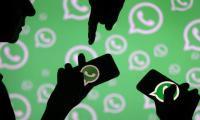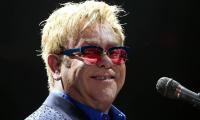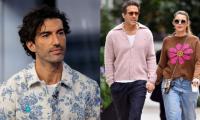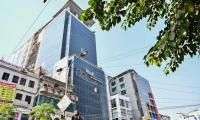“Bendicks Bittermints.” She also relished the delights of peppermint ice cream and apple cider during her stay in England.
The first-ever US President George Washington is often associated with cherries. According to his biographers, he simply loved cherries, besides being very fond of a wide variety of fruits, nuts and fish.
Interestingly, at the first-ever American State Dinner of May 29, 1789, General George Washington had feted his country’s vice-president, the governor of New York, the ministers of France and Spain, the secretary of the United States for Foreign Affairs and Speaker of the House of Representatives of the United States with just a boiled leg of mutton, as it was his custom to eat only one dish.
After the dessert, a single glass of wine was offered to each of the guests. When the president rose, the guests followed.
(Reference: William Baker’s 1898 book “Washington After the Revolution”)
Sitting American President Barack Obama loves eating nuts, seeds and raisins, besides having a strong appetite for “Fran’s Chocolates,” an artisan chocolate brand from Seattle. While he prefers Fran’s Smoked Sea Salt Caramel in Milk Chocolate ($24 for a 16-piece box); his wife Michelle prefers dark chocolate.
(Reference: Sean Seedlock, the Fran’s marketing chief and USA Today’s November 6, 2008 edition)
In drinks, Obama is a fan of the organic Black Forest Berry Honest Tea.
(Reference: Seth Goldman, CEO of Honest Tea)
Former US President Ronald Reagan loved jelly beans and his predecessor, Jimmy Carter, munched peanuts.
George W. Bush is a pretzel lover. A pretzel is a type of baked bread product made from dough most commonly shaped into a knot.
Former British premier Winston Churchill loved Continental tastes when it came to drinking.
Churchill’s favorite brandy was “Hine,” his preferred Champagne “Pol Roger,” and his top Scotch was “Johnnie Walker Red Label.” He would drink champagne at all meals, and buckets of soda in between.
During Queen Victoria’s rule, as her biographers have mentioned, multicourse French menus used to be served, although she herself was a frugal eater and showed little interest in food.
At least five different courses were served for her royal breakfast. Bacon and eggs, chickens, chops, cutlets, sausages and steaks etc were just some of the dishes on offer on the British monarch’s table. However, Victoria would only eat one egg, served in a gold egg cup with a gold spoon.
One particular course she insisted should be made available for lunch was a dish of curry and rice, served with considerable ceremony by two Indian servants.
The royal supper was undoubtedly the most elaborate meal of the day. It was customary to serve both thick and clear soups, as well as fish either plainly cooked or prepared according to elaborate recipes requiring complicated sauces and flamboyant dressing.
Mahatama Gandhi was the simplest of all.
In his book “Key to health,” Gandhi had written: “Now let us consider how often and how much should one eat. Food should be taken as a matter of duty-even as a medicine-to sustain the body, never for the satisfaction of the palate. Thus, pleasurable feeling comes from satisfaction of real hunger.”
Former US President Franklin Delano Roosevelt’s favourite dish was scrambled eggs, cooked by his wife. At Sunday night suppers, besides at breakfast, scrambled eggs were the main White House dish.
(Reference: The January 15, 1939 edition of the New York Times)
Another former US President Harry Truman was not a picky eater, but he preferred traditional farm style food like roast and fried chicken. When pushed to comment on his food preferences, he had once stated: “Never notice what’s put before me. Learned in the army to eat what could be obtained and like it. In my outfit when a man kicked about the food, he was given a chance to improve it. That soon cured the kickers and they took what was put before them and liked it.”
Dwight D. Eisenhower, another celebrated American President, was an accomplished cook who enjoyed preparing food for family and guests.
President Eisenhower was fond of apple pie, rice pudding cooked the British way and a pitcher of heavy cream passed with dessert.
French Emperor Napoleon Bonaparte loved eating alone. He liked eggs fried in butter, potatoes, beans and lentils. He was fond of soup too. He never drank alcohol, but ended every meal with a cup of coffee.
(Reference: Christian Guy’s 1962 book “An Illustrated History of French Cuisine from Charlemagne to Charles de Gaulle.” This book was translated by Elisabeth Abbott in English)
US President James Monroe, like his former teacher and mentor President Thomas Jefferson, was fond of Continental cuisines, but he was equally fond of fried chicken with rice.
President John Quincy Adams, with all his exposure to diverse European cuisines, showed little interest in food.
President Andrew Jackson liked hot water corn cakes served with caramelized onions, roasted lamb chops with rosemary, cheese and grapes.
President James Polk had a great liking for Tomato Omelette.
(Reference: “The Presidents’ Cookbook” by authors Poppy Cannon and Patricia Brooks)
Research reveals that Mongolian rulers of the Yuan Dynasty were especially fond of mutton, and 80 per cent of the dishes in their palace were made of mutton.
Similarly, the Qing Dynasty rulers ate pork and their cooking methods included stewing, roasting and boiling of meat.
(Reference: Chinese government’s official guide to the city of Beijing)
Cases against Shibli Faraz have been registered at Margalla, Tarnol, Aabpara, and Kohsar police stations
Court issued stay order restricting Election Tribunal from further action over Mughal’s petition
Petitioner had challenged results of the PP-182 constituency in Kasur
Main accused in case, Ghuffaran alias Haroon, has been sent to Lahore for DNA tests
Tribunal rules that the petitioner failed to provide adequate proof to support his claims of rigging
Cabinet Division issued a notification containing the complete list of holidays to be observed next year







